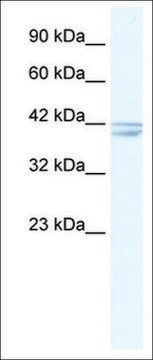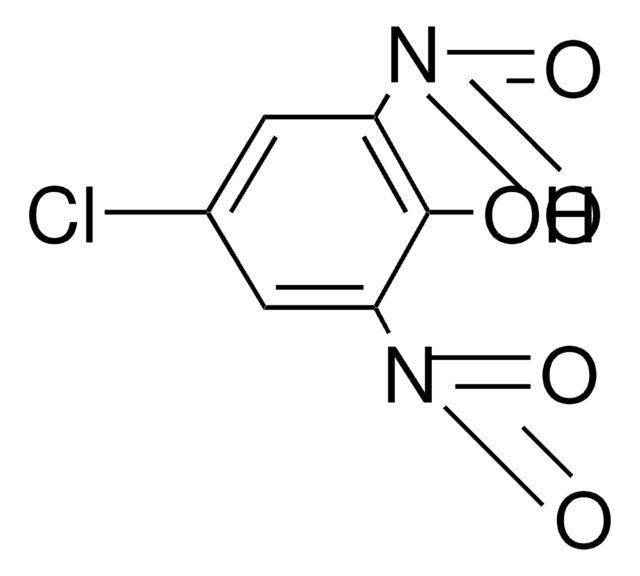MABN1833
Anti-nAChR α4 Subunit Antibody, clone 369
clone 369, from mouse
Sinónimos:
Neuronal acetylcholine receptor subunit alpha-4, alpha4 nAChR subunit, Cholinergic receptor, nicotinic, alpha polypeptide 4, nAChR alpha4 subunit, Neuronal nicotinic acetylcholine receptor alpha-4 subunit
About This Item
Productos recomendados
biological source
mouse
Quality Level
antibody form
purified antibody
antibody product type
primary antibodies
clone
369, monoclonal
species reactivity
monkey, human, rabbit
technique(s)
immunofluorescence: suitable
immunohistochemistry: suitable (paraffin)
isotype
IgG1κ
NCBI accession no.
UniProt accession no.
shipped in
wet ice
target post-translational modification
unmodified
Gene Information
human ... CHRNA4(1137)
General description
Immunogen
Application
Immunofluorescence Analysis: A representative lot detected the localization of nAChR α4 subunit immunoreactivity in monkey frozen retina sections by fluorescence immunohistochemistry (Liu, J., et al. (2009). Invest. Ophthalmol. Vis .Sci. 50(3):1408-1415).
Immunofluorescence Analysis: A representative lot detected the localization of nAChR α4 subunit immunoreactivity in various areas of the rabbit brainstem by fluorescence immunohistochemical staining of free-floating sections (Centeno, M.L., et al. (2004). Brain Res. 1012(1-2):1-12).
Immunofluorescence Analysis: A represenative lot detected an increase of nAChR α4-positive neurons in the A1, A2 and A6 brainstem noradrenergic areas of female rabbits 1 hr after mating by fluorescence immunohistochemical staining of free-floating sections. The number of nAChR α4-positive neurons subsided to basal level 2 hrs after mating (Centeno, M.L., et al. (2004). Brain Res. 1012(1-2):1-12).
Neuroscience
Neurotransmitters & Receptors
Quality
Immunohistochemistry Analysis: An 1:50 dilution of this antibody detected nAChR α4 Subunit in human cerebellum tissue.
Target description
Physical form
Storage and Stability
Other Notes
Disclaimer
Not finding the right product?
Try our Herramienta de selección de productos.
Storage Class
12 - Non Combustible Liquids
wgk_germany
WGK 1
flash_point_f
Not applicable
flash_point_c
Not applicable
Certificados de análisis (COA)
Busque Certificados de análisis (COA) introduciendo el número de lote del producto. Los números de lote se encuentran en la etiqueta del producto después de las palabras «Lot» o «Batch»
¿Ya tiene este producto?
Encuentre la documentación para los productos que ha comprado recientemente en la Biblioteca de documentos.
Nuestro equipo de científicos tiene experiencia en todas las áreas de investigación: Ciencias de la vida, Ciencia de los materiales, Síntesis química, Cromatografía, Analítica y muchas otras.
Póngase en contacto con el Servicio técnico








